How to Clean a Nespresso Coffee Machine?
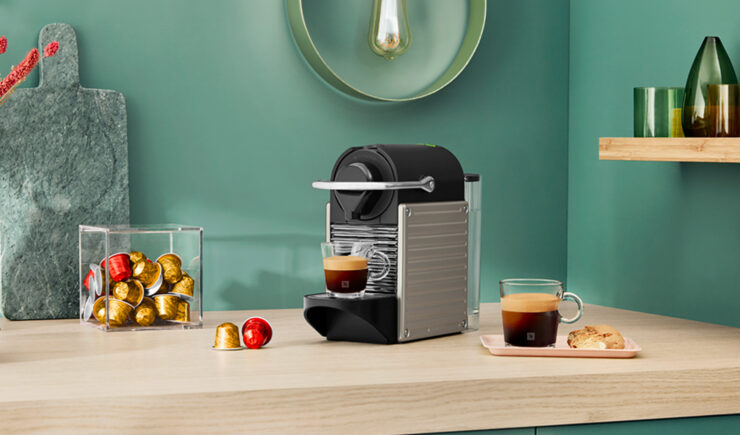
Is a stylish Nespresso coffee machine now adorning your home too? If so, we’re glad to hear it! Hopefully, you’re enjoying excellent coffee and will continue to do so for as long as possible. However, if you’re still thinking whether one of these Nespresso coffee machines may be right for you or not, you should definitely read on as well.
Not only do well-maintained machines boast a longer service life, but they also brew drinks that are even more delicious and allow you to experience the most subtle of tasting notes: from the fruitiness of Ethiopian coffee to the chocolatey sweetness of Brazilian varieties. So, let’s go ahead and find out how to properly maintain a Nespresso coffee machine!
Cleaning a Nespresso Coffee Machine
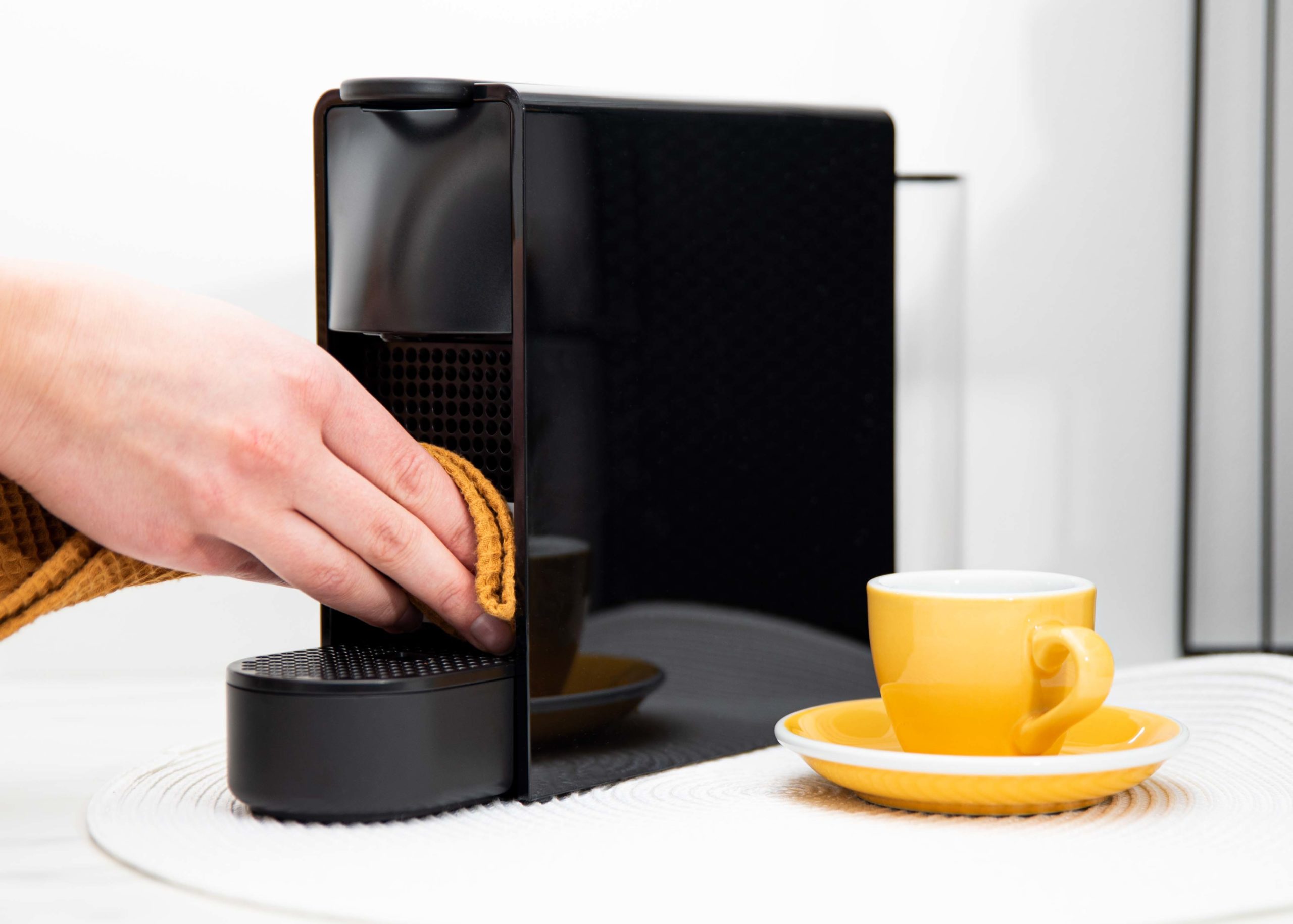
A Nespresso coffee machine lets you brew delicious coffee with the touch of a single button. To maintain excellent taste and make sure that brewing is always a pleasure, we recommend cleaning your machine regularly. Coffee connoisseurs even say that if you want to find out what the quality of your coffee is going to be like, all you have to do is assess the cleanliness of the machine that’s going to be used to brew it. So, how to ensure that your Nespresso coffee machine is being cleaned properly?
- Water quality has a huge impact on the flavour of your coffee, which is why you should regularly rinse the water tank and fill it up with fresh water daily.
- Empty the drip tray and the used capsule container every day. Rinse them with warm water and dry them with a dry cloth.
- Clean the coffee outlet with a wet cloth regularly.
- Make sure to regularly clean the surface of your coffee machine with a wet cloth, then dry it with a dry one.
- Every time you turn your machine on, rinse its internal system: simply place a cup or bowl under the coffee outlet and press the Lungo button (there should be no capsule in the coffee machine at this time). Running water will get rid of any residual impurities.
Cleaning the Milk System of a Nespresso Coffee Machine
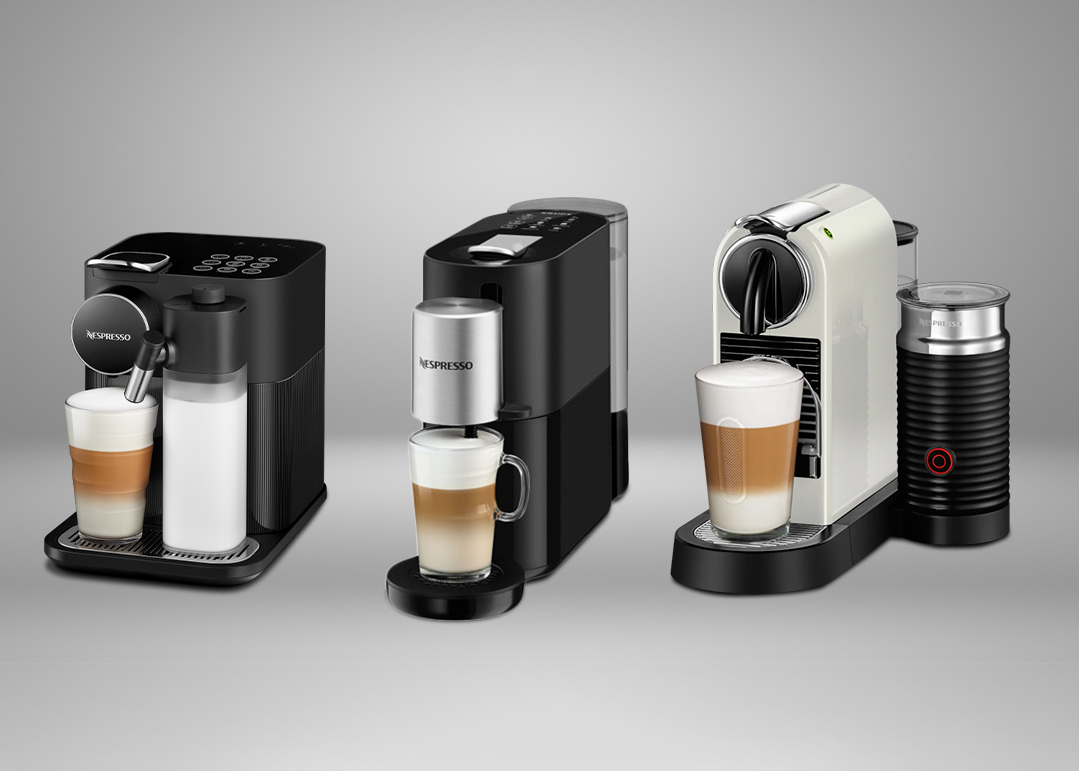
If you’re a sworn fan of milk-based coffees, your Nespresso machine is guaranteed to be equipped with a milk frothing system. Regardless of whether it’s the impeccable Aeroccino milk frother, a milk jug from the Lattissima series or the frother of the elegant Atelier, you’ll still have to pay special attention to the maintenance of these components. You do want your drink to be topped with velvety, perfectly fresh milk foam, don’t you? Well, then cleaning your milk system diligently is an absolute necessity. Regular maintenance also prevents bacteria from accumulating — that’s definitely important as these bacteria can ruin your drink or even affect your digestive tract. Let’s look at how a Nespresso milk system should be cleaned then.
Cleaning the Aeroccino Milk Frother
To get rid of all milk residue, the frother must be cleaned after each use. Luckily, it’s very simple:
- Before you start, unplug the appliance and let it cool down.
- Remove the lid and detach the whisk. Then remove the seal from the lid. Rinse the whisk, seal and lid under warm water.
- Using a wet, non-abrasive sponge or cloth, clean the inside of the frother thoroughly. Keep in mind that the frother is not dishwasher-safe and can’t be submerged in water.
- Dry all components of your Aeroccino with a clean kitchen towel, cloth or paper wipes, then reassemble it.
These four simple steps will keep milk residue from sticking to the walls of your frother and will let you enjoy the perfect milk foam each time you feel like it.
Cleaning the Milk Tank of the Nespresso Rapid Cappuccino System
To maintain this milk tank properly, you’ll need to run the automatic rinsing program after each use, as well as clean the tank manually.
- Once you’re finished brewing a drink, the cleaning icon will light up orange, notifying you about the need to rinse the Rapid Cappuccino system.
- Place an empty container under the coffee outlet, then turn the milk froth regulator knob to the Clean position or press the cleaning button (depending on the model).
- The appliance starts rinsing the milk system: hot water mixed with steam is dispensed from the milk spout.
- When it’s done, rinsing stops automatically.
If you’ve kept the milk tank at room temperature for more than 30 minutes or stored it in the fridge, unused, for more than 2 days, you should wash the tank in a dishwasher. If you have no dishwasher at home, you can clean the tank manually as well. Simply follow these steps:
- Disassemble the Rapid Cappuccino system.
- Wash off any milk residue thoroughly with hot drinking water (40 °C).
- Using a sponge, get rid of any visible impurities.
- Soak all components in hot drinking water (40 °C) mixed with a mild detergent for at least 30 minutes, then rinse them thoroughly with hot drinking water (40 °C). Avoid scented detergents.
- Clean the interior of the milk tank, the milk spout connector and the milk froth regulator knob with a mild detergent and rinse them under hot drinking water (40 °C).
*Ensure that the air inlet is clean to make the frothing process much smoother. - Dry all components with a clean towel, cloth or paper wipes.
To keep your milk system spotlessly clean, we recommend purchasing the universal coffee machine milk system cleaner “For Better Coffee”. Mix this cleaner with water using a ratio of 1:10 and use it as a mild detergent. You can also soak the components of the milk system in this solution and get rid of any milk residue with ease.
Descaling a Nespresso Coffee Machine
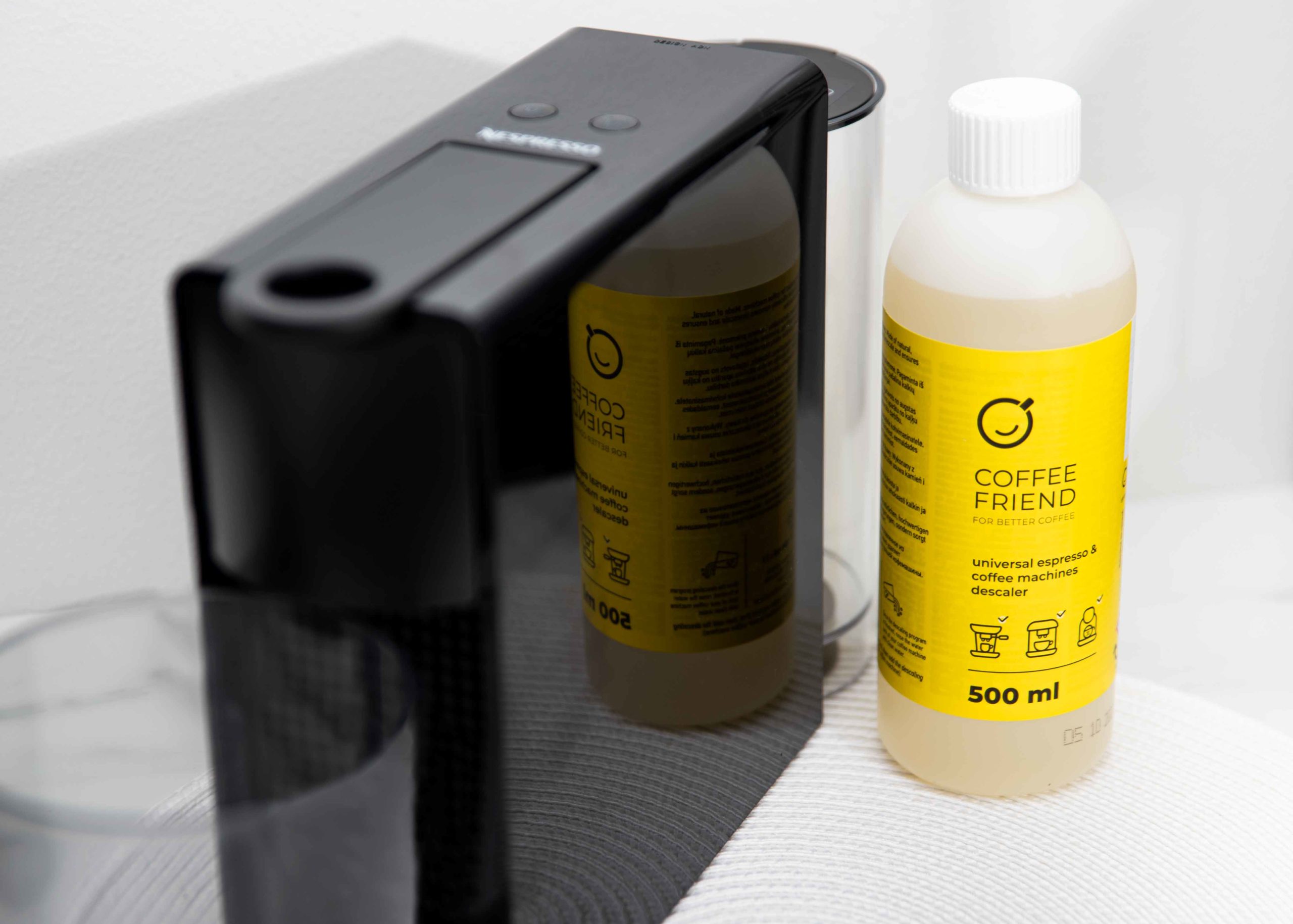
It’s often said that when it comes to any appliance that uses hot water, limescale is its arch-enemy. No wonder then that limescale is one of the key reasons behind various coffee machine malfunctions too — and that these malfunctions can even render some machines completely unfixable. Limescale is actually a result of hard water being heated: water like that contains lots of calcium and magnesium bicarbonates, which are converted into water, carbon dioxide and insoluble carbonates as temperature increases. The latter ultimately form deposits on the walls of the heating element and clog up the water system. Once that happens, the process of brewing a cup of coffee starts taking longer. Consequently, more energy is consumed and the costs involved in keeping your machine running inevitably increase.
Limescale deposits affect the flavour of your coffee too: as pressure within the system drops, some qualities of your coffee can’t be unveiled, while the overabundance of ions found in hard water may result in poor taste due to increased solubility of various substances.
How Often Should You Descale Your Nespresso Coffee Machine?
All of the reasons discussed above make regular descaling an absolute necessity. You might be wondering, however, how often this should be done. Well, some Nespresso coffee machines are equipped with special indicator lights that notify you as soon as the time to descale your appliance rolls around. If your appliance can’t boast lights of this kind, then you should descale your coffee machine at least once every 3 to 6 months. The recommended frequency varies greatly depending on the hardness of your water.

Determining the hardness of your water isn’t always an easy task. The main indicator in this case is the speed with which limescale deposits form on the interior of your kettle or the walls of your shower cabin. However, if you’re looking for precision, you should use a special water hardness test strip (these usually measure hardness in the so-called “German degrees of hardness”, or °dH, with 1 °dH generally signifying 10 mg CaO per one litre of water). The harder your water and the larger the number of servings you brew each day, the higher the frequency with which you’ll have to descale your capsule coffee machine.
All coffee machines are descaled in a similar fashion: first, some descaling liquid is poured or a descaling tablet is dropped into the water tank and the required amount of water is added. During the procedure, this mixture of water and a special descaling product fills up the water system until, finally, the solution is dispensed from the coffee spout in certain intervals. Once the entire solution has been dispensed, you must rinse the water tank thoroughly, fill it up with clean water and rinse the water system one more time.
Which Descaling Product Should You Choose?
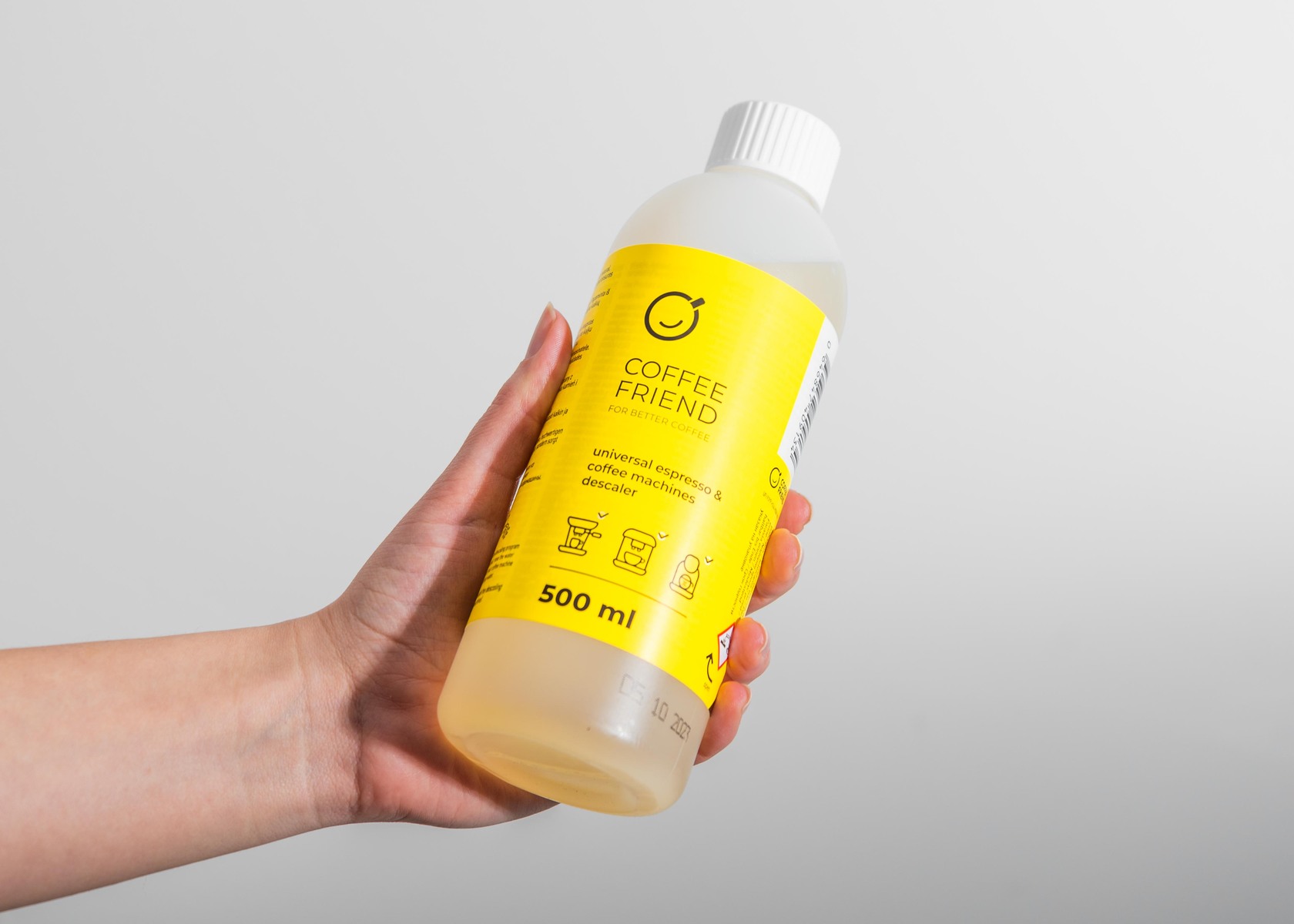
The key to a successful descaling procedure is undoubtedly the right product used to make the descaling solution. You might have tried using citric or acetic acid to descale household appliances in the past — or at least you may have heard of others doing it. Sure, like most acids, products like these can help you get rid of limescale. However, you have to remember that the right concentration is absolutely vital when it comes to efficient descaling — and acids like these are particularly difficult to measure out properly. If your descaling solution is too mild, you won’t get rid of all limescale deposits, but if it’s too strong, you might end up ruining your coffee machine completely. Citric or acetic acid can cause serious damage to the internal components of your appliance, especially its rubber gaskets, which may then start leaking.
As a result, you should definitely go for descalers designed specially for coffee machines. Their chemical composition is just right for getting rid of limescale over the specific duration of a descaling procedure. Moreover, these descalers can safely come into contact with food: even if a small amount of the liquid remains in the water system, it won’t have any effect on the human body. One of such products is the universal descaler “For Better Coffee”, which is suited for all kinds of coffee machines. Made from natural ingredients of the highest quality, this descaler is both tender and effective.
How to Descale a Nespresso Coffee Machine?
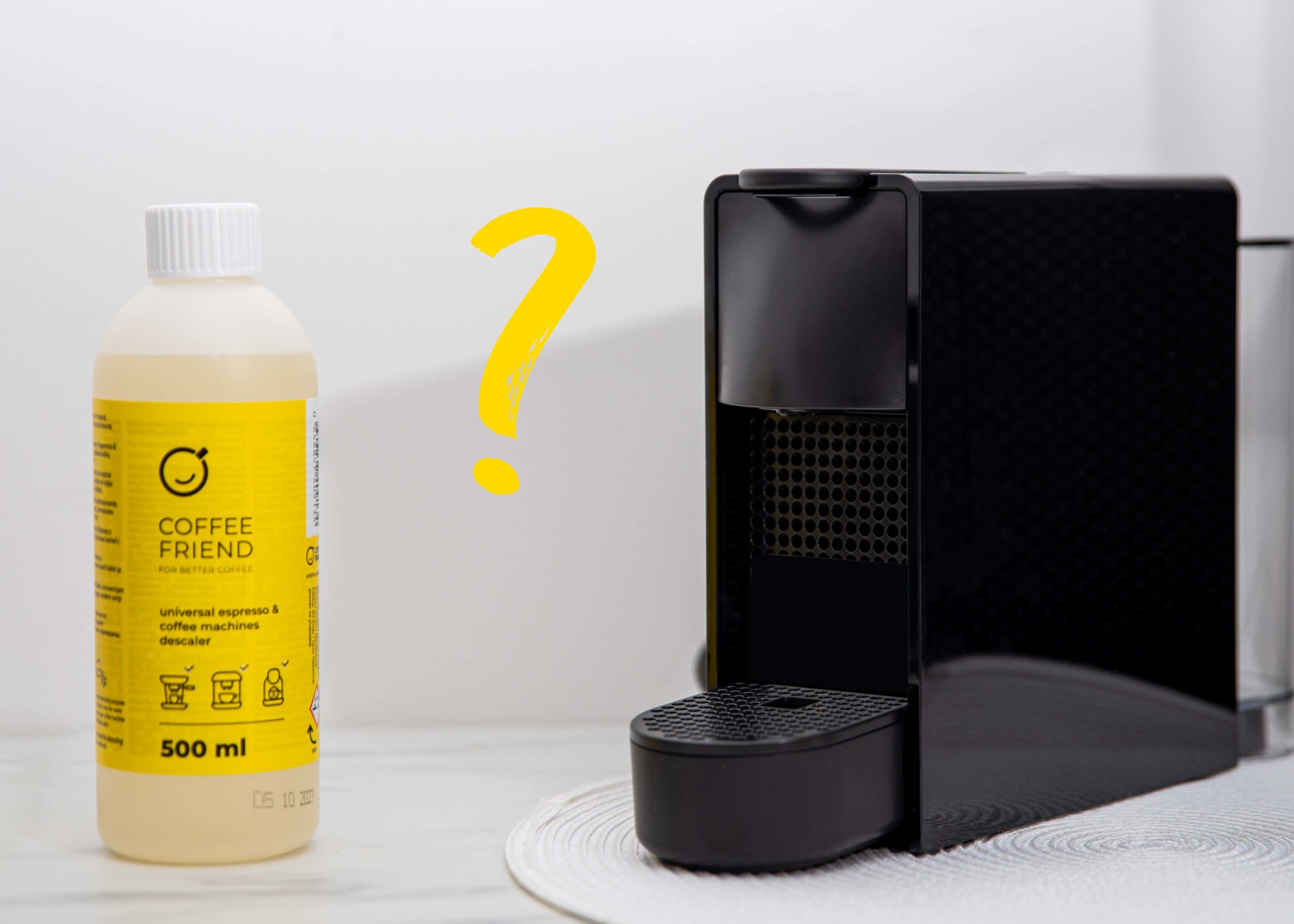
Most Nespresso models are equipped with an integrated descaling program: to run it, follow the instructions provided in the user manual. We’re going to present some of the crucial steps below though to help you get a general understanding of how Nespresso coffee machines are descaled.
- Remove the used capsule and close the lever.
- Empty the drip tray and the used capsule container.
- Pour the required amount of water and descaler into the water tank (follow the descaler instructions).
- Place an empty container (with a capacity of no less than 1 l) under the coffee outlet.
- To run the descaling program, follow the instructions in the user manual. It’s usually done by pressing the Espresso and Lungo buttons (Ristretto and Lungo buttons if you’re using the Atelier model) simultaneously and holding for 3–5 seconds (depending on the model).
- If you’ve used the Espresso and Lungo buttons to start the program, press the Lungo button afterwards and wait for the water tank to be emptied completely.
- Refill the water tank with the used descaling solution dispensed into the container and go through the previous steps once again.
- Empty the water tank and rinse it thoroughly. Then fill it up with fresh, clean drinking water and repeat the previous steps.
- If you’ve used the Espresso and Lungo buttons to start the program, press them simultaneously once more and hold for 5 seconds to exit the descaling mode.
If your machine is equipped with a milk frothing container, then the descaling procedure will be a bit different. You’ll have to use a descaling pipe located on the back of the appliance and connect it to the machine’s steam connector. The descaling program will start automatically, then you’ll have to press the drink button that lights up white (depending on the model, it’s either the Flat white or the Espresso button).
Watch Videos on How to Descale the Most Popular Models
We’re definitely aware of the fact that descaling procedures differ from model to model and it’s certainly easy to get lost amongst their various features. That’s why we’ve decided to present you with videos detailing the descaling procedures of the most popular Nespresso models. If you have a different model, yet it’s operated in the same way, this information will apply to your machine too.
Nespresso Citiz & Milk
In Conclusion
So, there it is: these are all the maintenance procedures you’ll have to perform if you want your Nespresso machine to keep on brewing delicious drinks for years to come. Cleanliness, hygiene and regular descaling will let you avoid malfunctions and have the true flavours of your coffee revealed to the fullest. We hope that these maintenance tips will help you enjoy exquisite beverages day in and day out!
If you have more questions though, don’t hesitate to reach out to our consultants: they’ll be happy to provide you with more advice related to the use and maintenance of your coffee machine.
